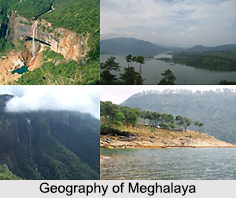Bindusagar Lake is one of the scared places in Bhubaneshwar which is also known as the "Bindu Sarovar and" Ocean Drop Tank". The lake serves as a focal point around which numerous temples of Bhubaneshwar are located. It is believed that this pristine lake stored many drops of water from every sacred rivers, pools and tanks in India. The Bindusagar Lake is about 1300 ft in length and 700 ft in width. The banks of the lake are covered with beautiful stones which enhance its charm. At one time, over 7,000 temples bordered the Bindusagar Lake in Bhubaneshwar, out of which only 500 still survive, all built in the Kalinga style architecture.
 Mythological Significance of Bindusagar Lake
Mythological Significance of Bindusagar Lake
With immense mythological significance to its credit, Bindusagar Lake stands as the major landmark in a city that is abundantly blessed with historic temples. Infact, the lake has been gaining tremendous popularity amongst the tourists as a picnic spot. A vast number of architectural treasures find existence in the area surrounding this huge water body. Lying to the north of the Lingaraja Temple and to the east of the Ananta Vasudeva Temple, the Bindusagar Lake is one of the popular tourist attractions of Bhubaneshwar. Every year, the idol of Lord Lingaraja (Lord Shiva) is brought to the lake for a ritual bath held during the annual Car festival (Ashokashtami). People believe that when a person takes a dip in the Bindusagar Lake, the holy water washes away all his sins and the devotees get rid of all their diseases by drinking the holy water. There is a very interesting legend associated with the creation of the Bindusagar Lake of Orissa.
Legend of Bindusagar Lake
As per the legend, Lord Shiva expressed his preference for Bhubaneshwar, over Benaras, in front of his consort, Goddess Parvati. She disguised herself as a cowherd woman and went to look at the city. On the way, she met two demons, "Kritti" and "Vasa", who expressed a wish to marry her. She asked them to carry her on their shoulders and when they did so, she crushed them under her weight. It was at this time that Lord Shiva created the lake to quench her thirst.















